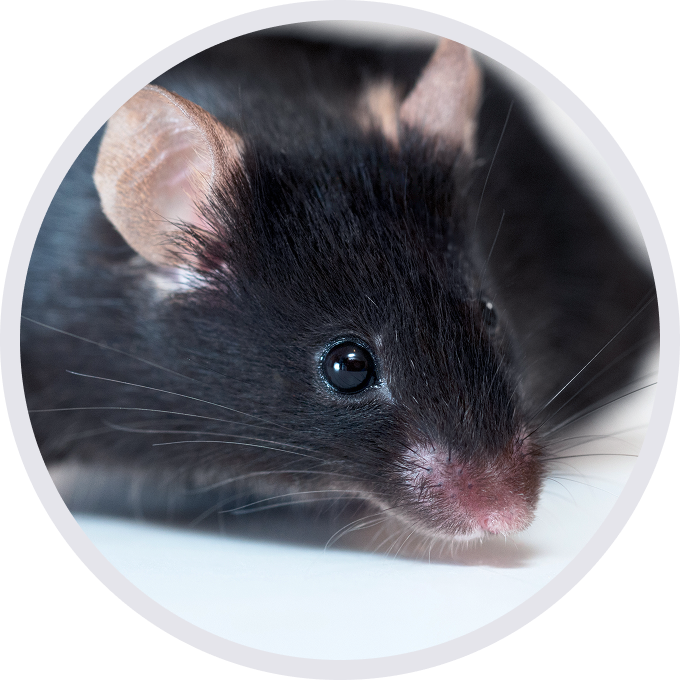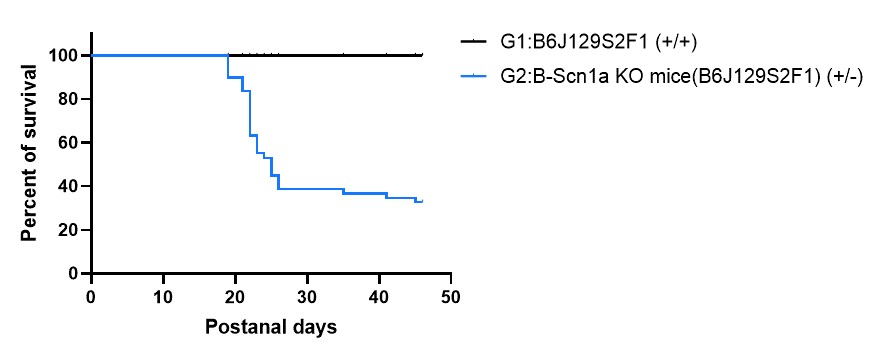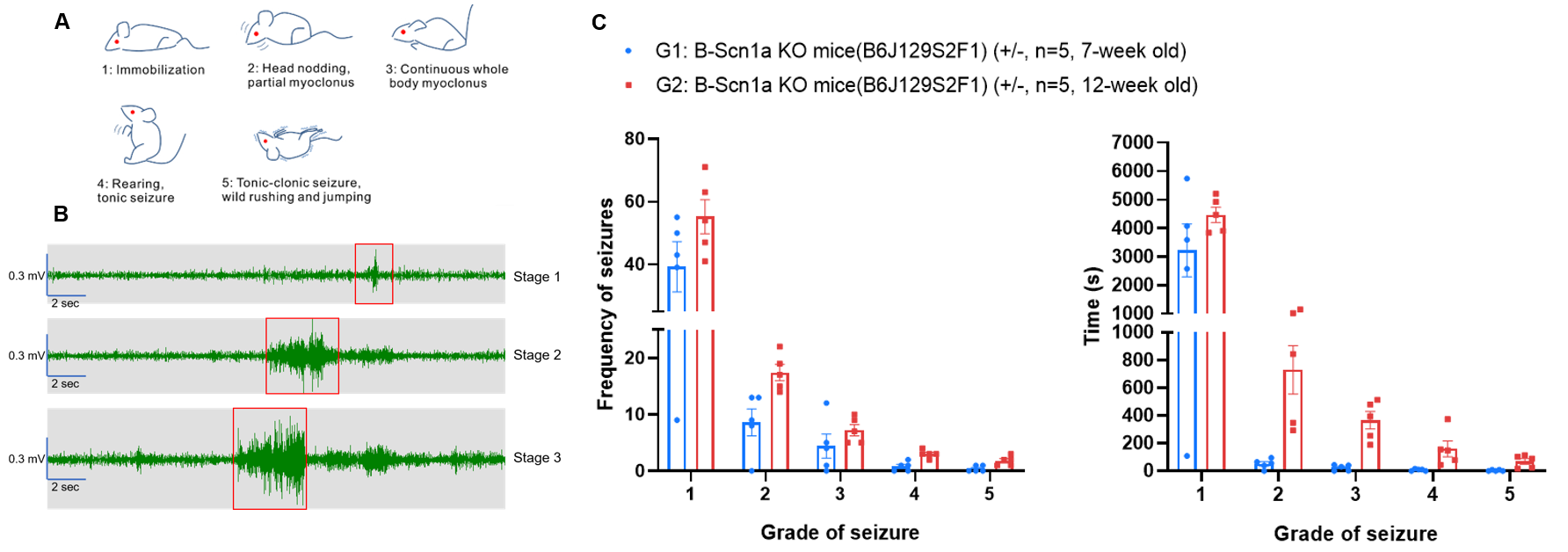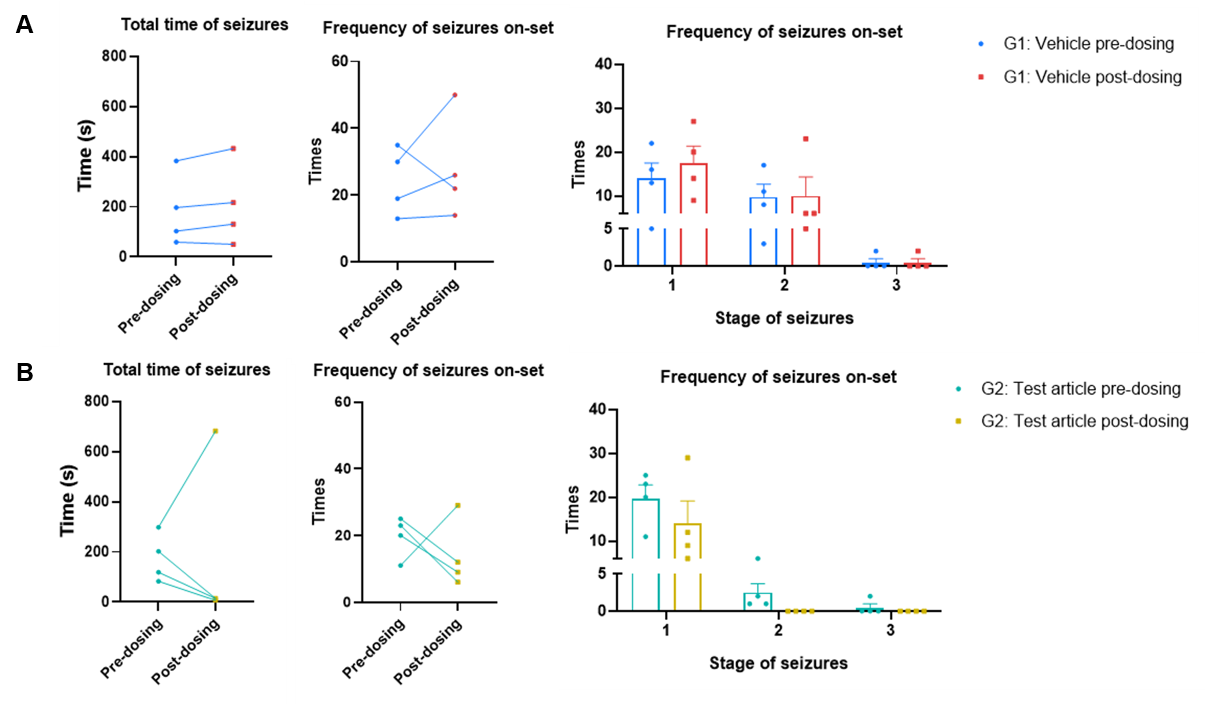
(C57BL/6JNifdc x 129S2/SvPasCrl-Scn1atm1Bcgen/)F1Bcgen • 114142

| Product name | B-Scn1a KO mice(B6J129S2F1) |
|---|---|
| Catalog number | 114142 |
| Strain name | (C57BL/6JNifdc x 129S2/SvPasCrl-Scn1atm1Bcgen/)F1Bcgen |
| Strain background | C57BL/6JNifdc; 129S2/SvPasCrl |
| NCBI gene ID | 20265,6323 (Mouse) |
| Aliases | Nav1.1; B230332M13; DEE6; DRVT; FEB3; FHM3; NAC1; SCN1; SMEI; DEE6A; DEE6B; EIEE6; FEB3A; HBSCI; GEFSP2; Nav1.1 |
Gene targeting strategy for B-Scn1a KO mice(B6J129S2F1). The genome sequences between exon 3 and exon 27 were depleted in B-Scn1a KO mice(B6J129S2F1), leading to the disruption of mouse Scn1a gene.

Heterozygous B-Scn1a KO mice(B6J129S2F1) showed premature death. The percent of survival of each genotype is plotted versus postnatal day. Heterozygous B-Scn1a KO mice(B6129S2F1) (n=33) died prematurely compared with littermate control mice, with initial deaths beginning at postnatal day 19, and approximately 40% of animals remaining at postnatal day 45.

Heterozygous B-Scn1a KO mice(B6J129S2F1) experienced electrographic seizures. A. Schematic diagram of different levels of seizure severity. B. Representative EEG traces during seizures. EEG recordings were obtained from five mice, capturing abnormal brain activity at both 7 and 12-week old. Each recording session lasted for 2 hours, during which both EEG and video recordings were simultaneously obtained. C. Statistics on the frequency and total duration of seizures in 2 hours recording. The mice exhibited spontaneous epileptic symptoms, and both the duration and frequency of seizures increased with age.
Note: This experiment was completed by our collaborating partner, PharmaLegacy Laboratories in Shanghai.

Test article reduced seizures in heterozygous B-Scn1a KO mice(B6J129S2F1). To more clearly demonstrate the efficacy of the test article, seizure events were quantified in the same heterozygous B-Scn1a KO mice(B6J129S2F1) before and after treatment. (A) Following administration of the vehicle control, heterozygous mice exhibited no reduction in total time of seizures or frequency; these data were consistent with our previous data, showing a progressive increase in seizure burden over time. (B) In contrast, treatment with the test article markedly attenuated the total time and frequency of seizure in heterozygous B-Scn1a KO mice(B6J129S2F1).
Note: The test article was from our collaborator, which is under confidentiality, and the experiment was completed by PharmaLegacy.